Chick Care Tips
Raising Chicks in a Brooder
Day-old chicks often sleep for the first 24 to 48 hours after hatching as the hatching process is exhausting. Please allow them to rest after pick up. Some chicks may appear sleepy while others may seem more lively, depending on when they hatched. They will typically become more active and start eating and drinking actively after 48 to 72 hours.
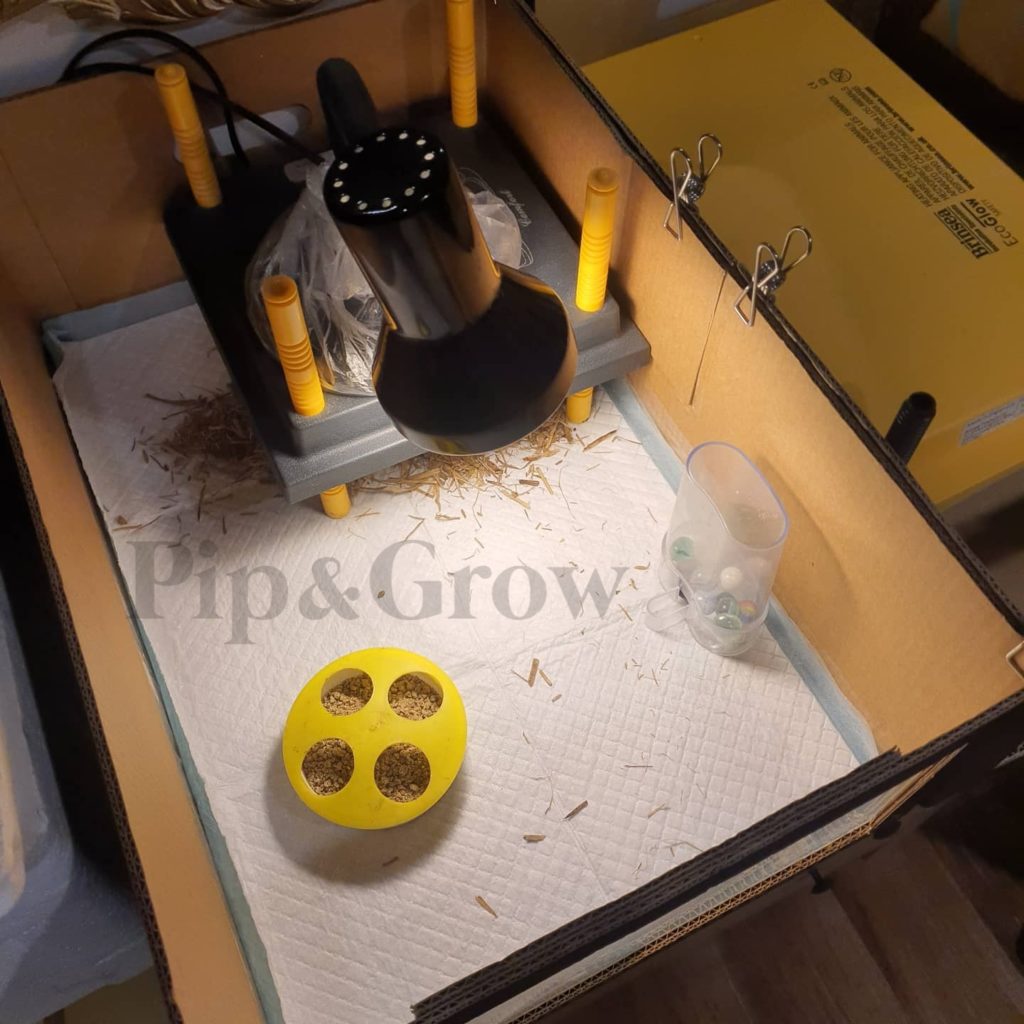
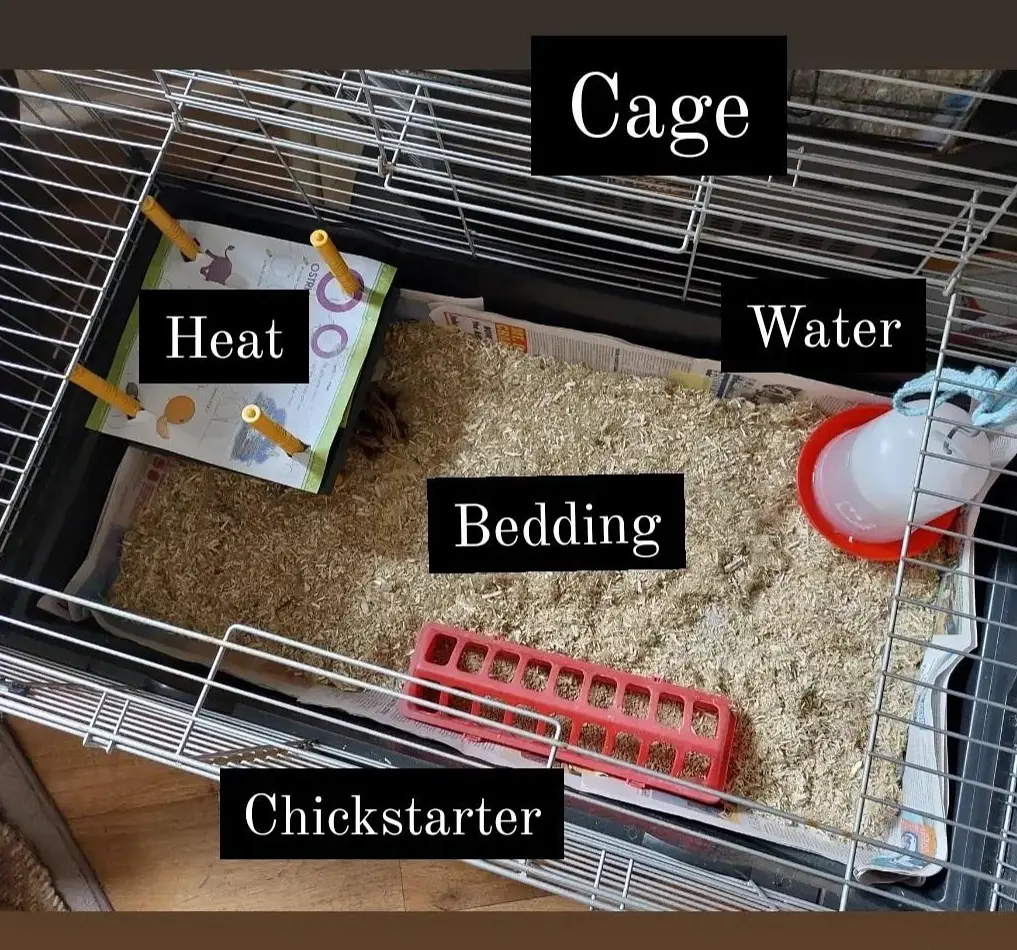
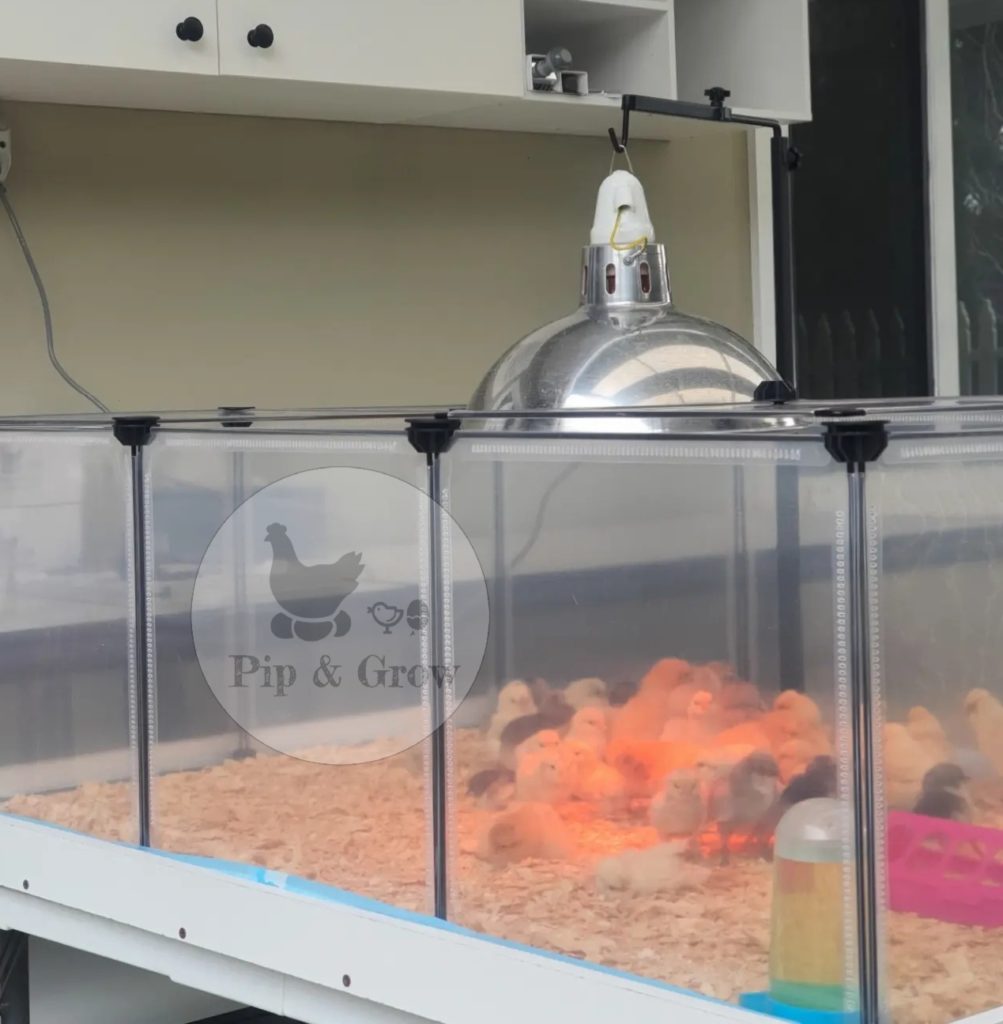
Raising chicks in a brooder involves providing them with a controlled environment that mimics the conditions under a broody hen.
– Brooder: Use a large, draft-free box or container with solid sides to prevent drafts. Line the bottom with absorbent bedding material such as puppy pads, pine shavings or straw. Please refrain from using newspaper as it is too slippery for chicks. This can potentially lead to splayed legs.
– Provide Heat: Chicks need a warm environment, especially during their early days. Use a heat lamp or heating pad specifically designed for chicks to maintain a temperature of around 35°C for the first week. Gradually reduce the temperature by 2-3°C each week until reaching room temperature. Read more about Heatlamp Vs Heatpad comparison
– Ensure Adequate Ventilation: While it’s essential to keep the brooder warm, it’s equally important to ensure proper ventilation to prevent respiratory issues. Make sure there is enough airflow without causing drafts.
– Provide Fresh Water: Place shallow waterer in the brooder to provide chicks with easy access to clean, fresh water. Use chick-specific waterer with nipples or place marbles or pebbles in the water dispenser to prevent drowning accidents.
– Offer Nutritious Feed: Provide chick starter feed, *specifically formulated to meet the nutritional needs of growing chicks. You can sprinkle the feed on the bedding initially to encourage natural foraging behavior. We recommend providing medicated chick starter for unvaccinated chicks to help prevent coccidiosis.
However, If chicks are vaccinated for Coccidiosis (All of our chicks are vaccinated for coccidiosis), it’s crucial to ensure that the chick starter feed does not contain any medication for coccidiosis. This is because the vaccination provides protection against the disease, and unnecessary medication in the feed could potentially interfere with the efficacy of the vaccine. Always check the label of the chick starter feed to confirm that it does not contain any additives or medications for coccidiosis before offering it to vaccinated chicks.
Read more about Chick feed – Chicken feed 101
– Monitor Health and Behavior: Keep a close eye on the chicks’ behavior and health. Look for signs of illness or distress, such as lethargy, huddling, or abnormal droppings. Address any issues promptly. If chicks are uncomfortable, they will often emit a loud, continuous cheeping noise, which can be distracting. On the contrary, content and comfortable chicks typically remain quiet and do not make excessive noise. Click here to view video – our baby brooder set up
– Encourage Exercise: As the chicks grow, provide opportunities for exercise by introducing perches or platforms inside the brooder. This helps them develop their muscles and coordination. Transitioning to a larger brooder cage as they grow is also advisable to prevent overcrowding and alleviate boredom, which can lead to feather pecking. Click here to view video – our 2-4 weeks old chicks brooder set up
– Maintain Cleanliness: Regularly clean the brooder to remove soiled bedding and prevent the buildup of waste. This helps maintain a healthy environment and reduce the risk of bacterial contamination.
– Vaccinated chicks should be quarantined for a period of 3 weeks to allow their immunity to fully develop. During this time, they should be kept separate from other birds, soil, outside environment to prevent potential transmission of diseases or pathogens. This quarantine period helps ensure that the vaccinated chicks are healthy and fully protected before they are introduced to other birds or integrated into a flock.
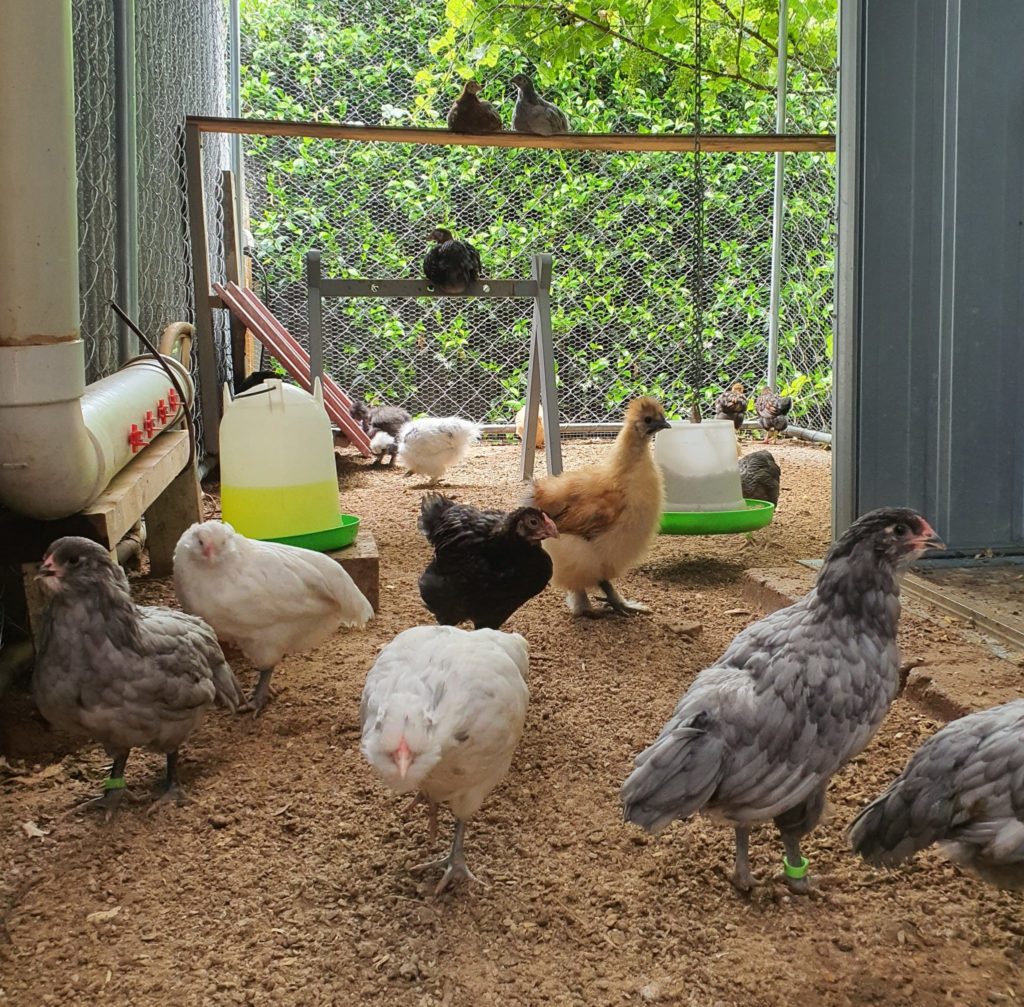
– Feed chick starter crumble to chicks until they reach 6-8 weeks of age. Transition to pullet grower feed from 16-18 weeks old.
– Once fully feathered, typically around 6-8 weeks old, chicks can begin living outside in a coop. However, smaller breeds such as silkies and bantams may require a bit more time, and this transition is also subject to weather conditions. It’s advisable to introduce them to their new environment gradually, starting with a few hours outdoors during the day and bringing them back inside at night. Extend their outdoor hours gradually until they are comfortable spending the entire day and night in their new coop.
– Introducing new chickens to an existing flock requires patience and careful management. Begin by keeping the newcomers separated from the main flock for at least 2 weeks, allowing them to become familiar with each other’s presence while still maintaining a physical barrier. During this time, they should be able to see and interact with each other through the fence.
When you’re ready to integrate them, do so gradually, allowing supervised interaction between the newbies and the established flock. Expect some pecking and establishing of the pecking order, which may take a few days or weeks to settle. It’s essential to introduce the new chickens in groups rather than individually, as lone newcomers are more likely to be targeted by the existing flock.
Ensure that the new chickens are at least 12 weeks old before introducing them to the adult flock to minimize the risk of aggression and injury. This gradual introduction process helps reduce stress and aggression among the chickens and promotes a smoother integration into the flock hierarchy.
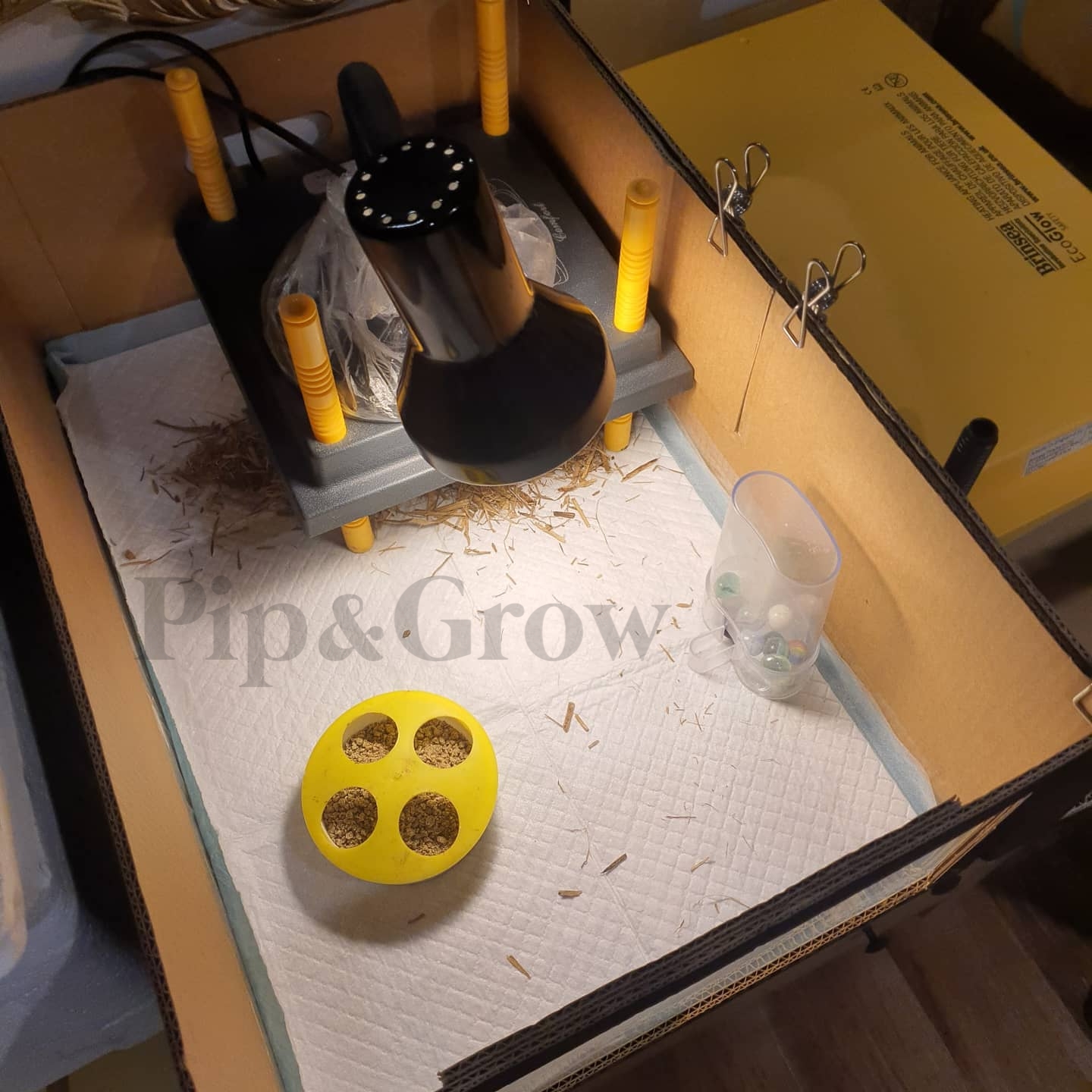
Hi, because I’m hatching my chicks at home how do I vaccinate them and give them the medications they need to be safe and healthy going forward? Is there somewhere I can buy it?
Thank you.
Hello Krystal,
Please see Vaccination FAQ page for more info regarding vaccination
https://www.pipandgrow.com.au/vaccination-faq/
Hi there, I am after some advice if possible.
We have a week old chicken that we think has splay leg, we have made a hobble out of tape (googled it and hoping it is right 🤔) but the foot still seems to be turning out and there also is swelling on the knee. How long should we keep it on? I am worried for the poor little thing as it doesn’t seem to want to put the foot down much and kind of limp hops. My daughter thinks it could be the hip.
Splayed Legs:
In this condition, the chick’s legs are fully functional and can bear its weight. The chick can lift itself up, but its legs continue to slide outward. This issue can typically be corrected with a hobble band within 24–48 hours.
Slipped Tendon:
This occurs when the bone around the “hock” joint—commonly referred to as the knee—becomes dislocated or malformed. The chick is unable to bear any weight on the affected leg, and there is visible swelling and redness at the back of the hock. Unfortunately, this condition is very painful for the chick and challenging to treat effectively at home. For the welfare of the chick, it is often best to consider humane euthanasia.